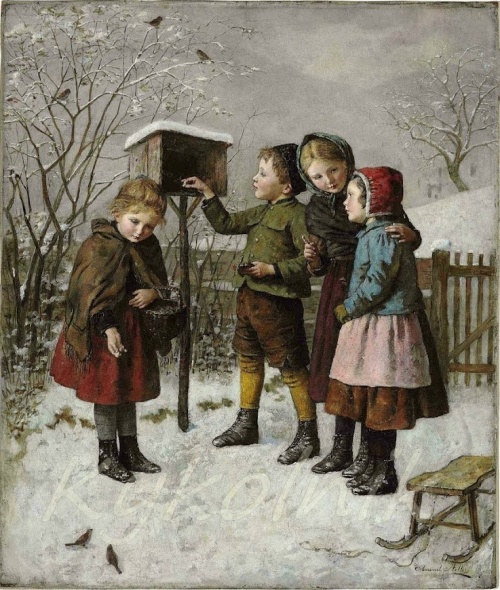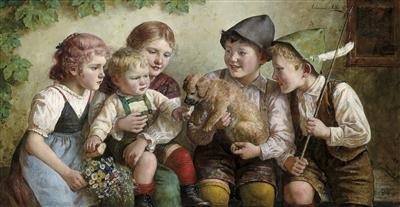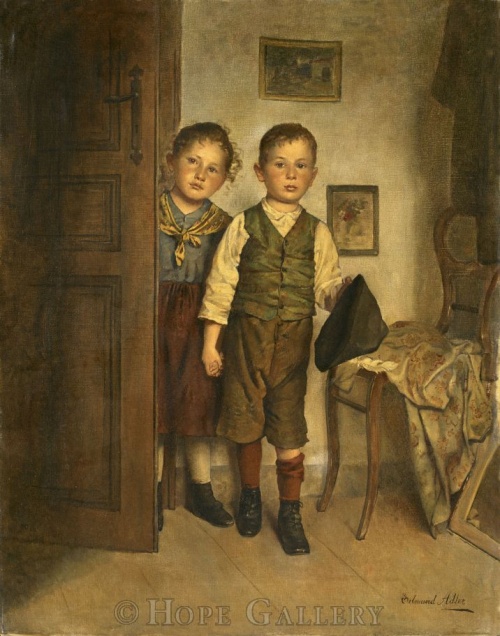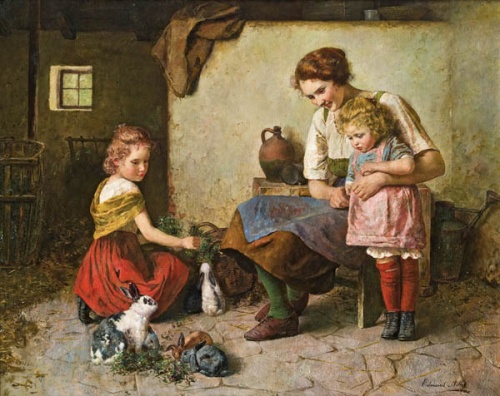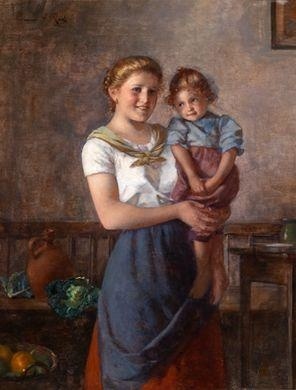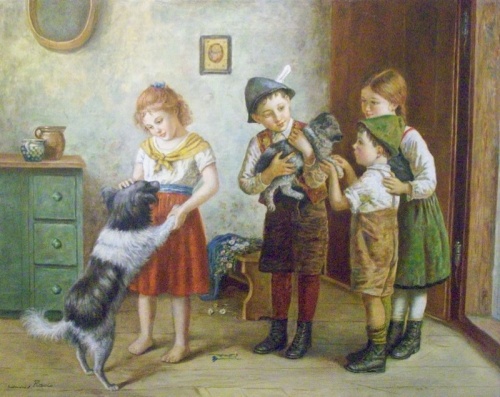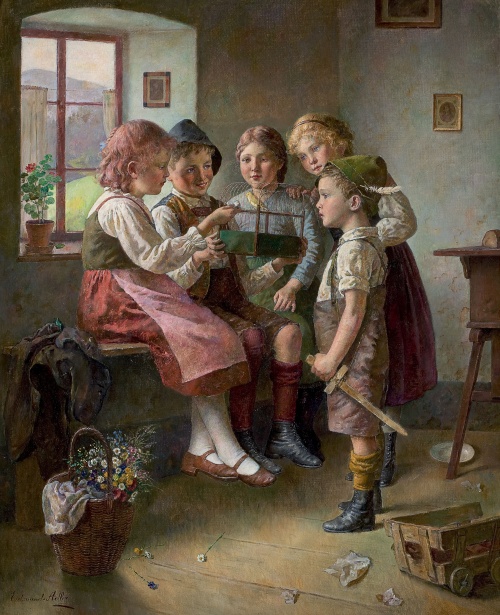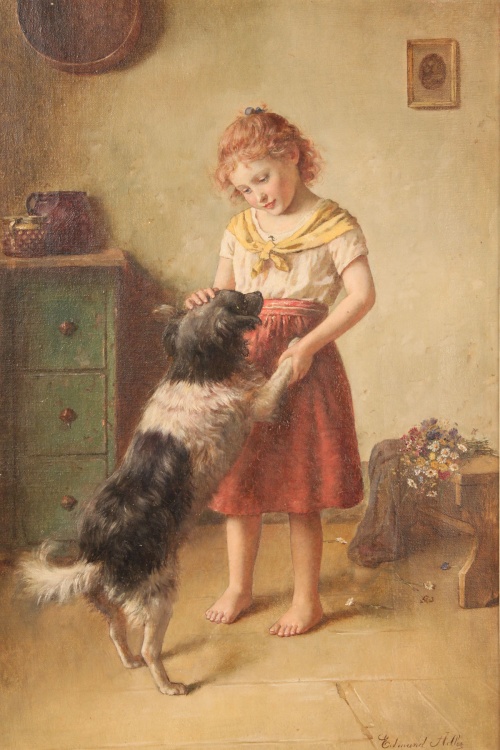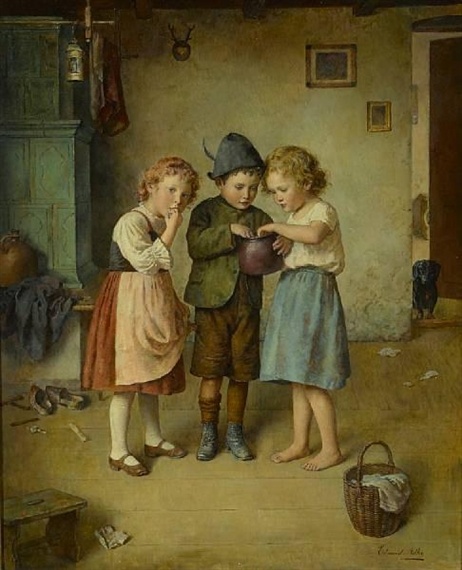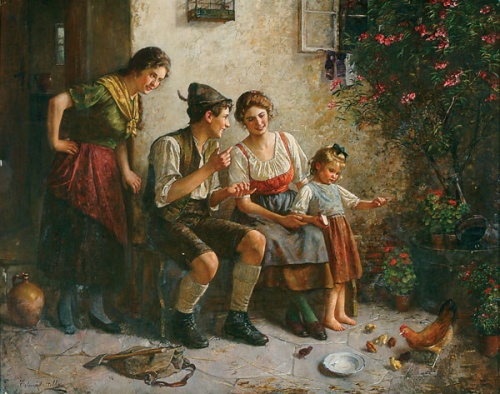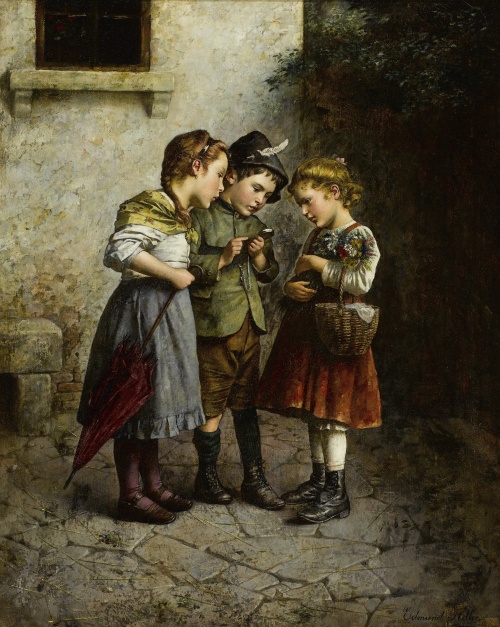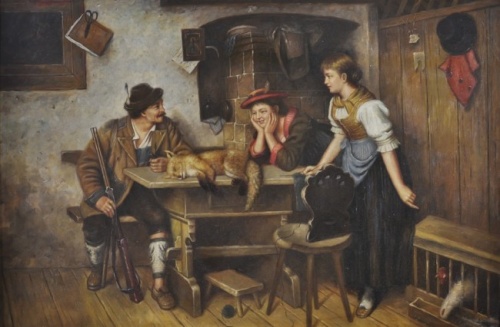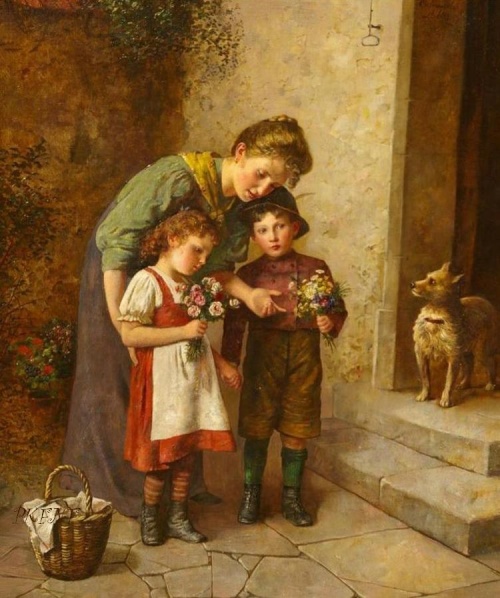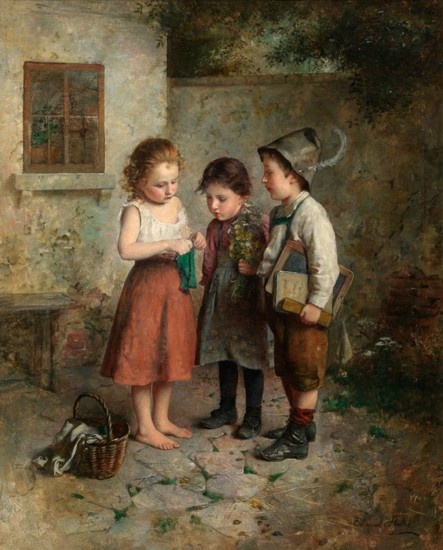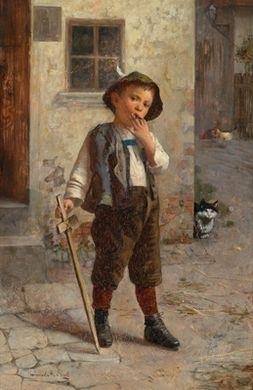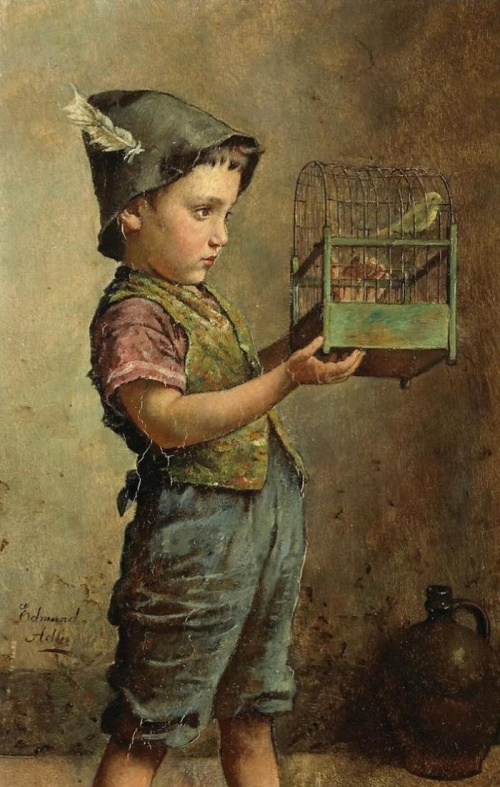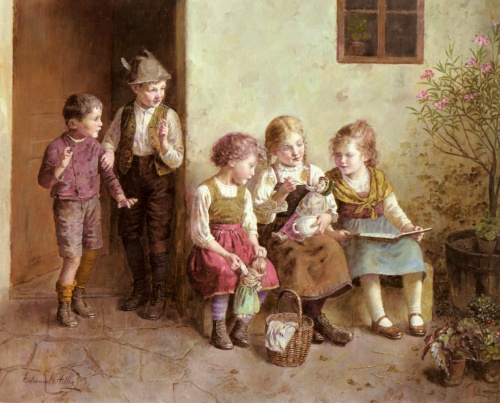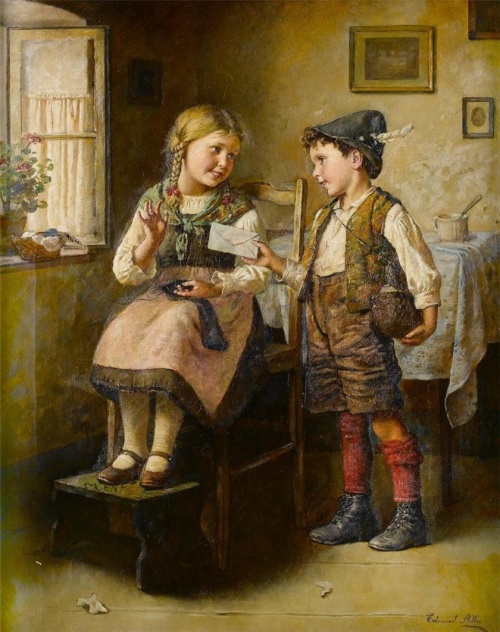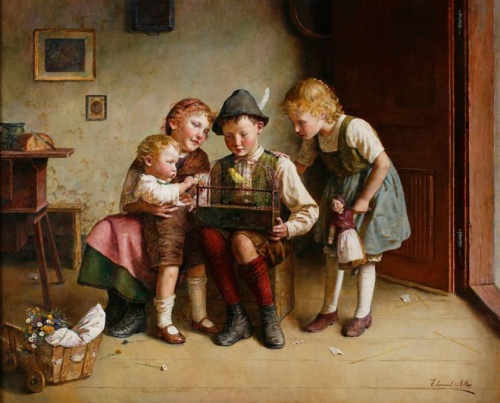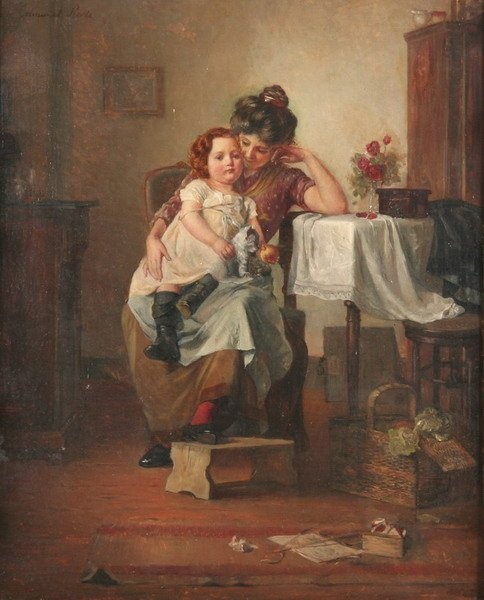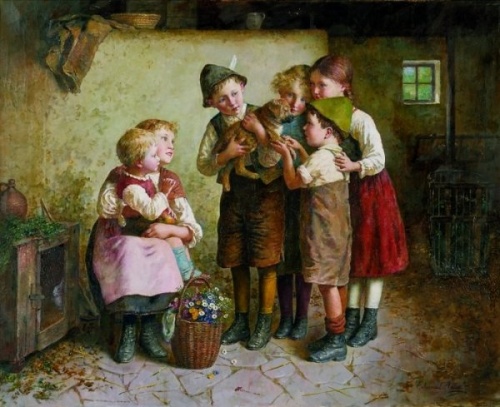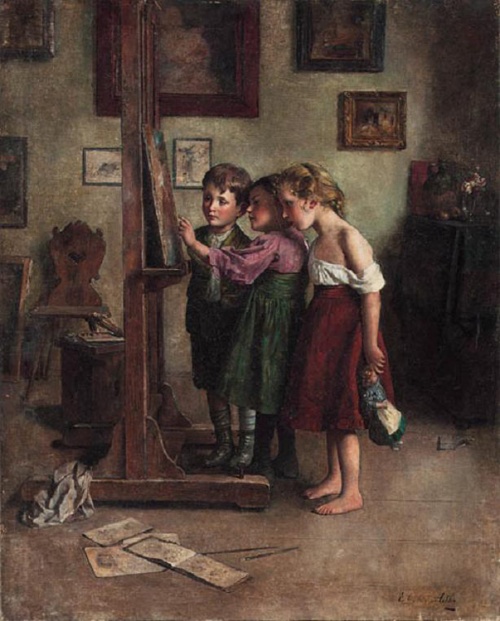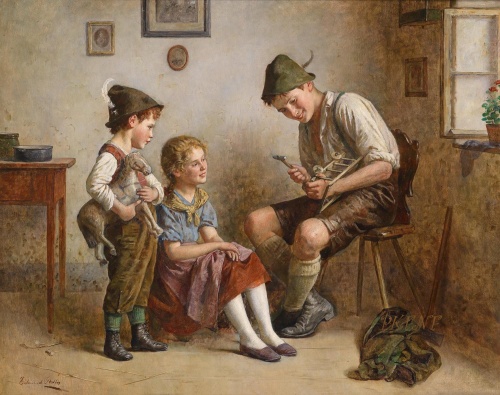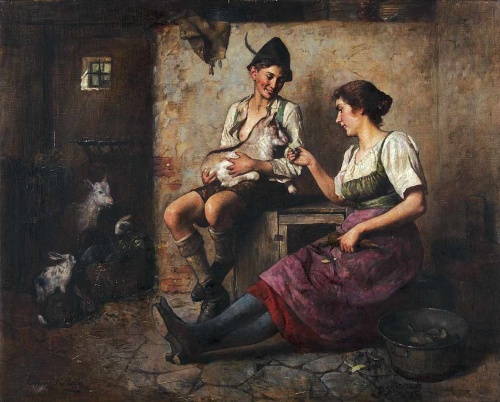Austrian artist Edmund Adler (1876-1965) (65 works)
Разрешение картинок от 400x207px до 2436x3000px
Edmund Adler
15 October 1876 - 10 May 1965
An Austrian genre painter, he was famous for the fact that, while engaged in creativity already in the twentieth century, he painted genre everyday scenes in the style of the nineteenth century, especially excellently depicting children.
His father Heinrich Adler was a Sudeten German who emigrated to Austria from the northwestern region of the Czech Republic, where an ethnographic group of Germans had long lived primarily in the Sudeten Mountains (hence the name "Sudeten Germans"). The future artist’s mother, Maria Magdalena Wiesinger, was the daughter of a farmer from the Austrian town of Zistersdorf.
At the age of sixteen, Edmund began his artistic education at an art lithographic school. For four years (1892-1896) the young man learned his profession under the guidance of Professor Franz Würbel (1822-1900), three years of which Edmund simultaneously worked as a lithographer in the teacher’s studio.
In 1896, Adler entered the Academy of Fine Arts in Vienna, his teacher was Professor Christian Griepenkerl (March 17, 1839 - March 22, 1912). During his senior year in 1903, Adler was awarded the Rome Academy Prize, which allowed him to spend a year of study in Rome (1903 - 1904). After returning from Italy, the artist received the academic title of associate professor and teaching position at the Academy, becoming an assistant professor.
In the early 1900s, Edmund met his future wife, the daughter of retired lieutenant Karl Pankratz, Rosa. At first the family lived in Vienna, and spent the summer months in the village of Mannersdorf. The artist knew this place since childhood; here he spent his summer holidays with his parents. In August 1903, Edmund and Rosa had a daughter, Rosa Magdalena (11 August 1903 – 18 October 1985), in Leithagebeerde. The following year, a son, Gustav (May 4, 1904 - March 12, 1907), was born, who lived only three years, and then a younger son, Gilbert (May 16, 1908 - July 17, 1995). True, both sons were born in Vienna.
War
In the autumn of 1914, when the First World War (1914-18) was already raging across Europe, the 38-year-old artist was drafted into the army and sent to the Eastern Front. On December 24 of the same year, Adler was captured by Russian troops and was escorted among many prisoners of war to Siberia, where he lived until the end of April 1920. Only in June 1920 did the artist return home on the first ship with repatriates.
The difficult road to success
Having moved on to peaceful life, Edmund took up painting professionally. Perhaps one of the reasons for his turning to the topic of children was the six years of captivity spent away from home and family.
Subsequently, Adler exhibited with both Austrian and Russian artists, and his works quickly became popular in the major cultural centers of Vienna and Dresden, as well as in Brunn, a city in Lower Austria, south of Vienna, where exhibitions with his participation also took place. Adler.
He painted mainly children's portraits and everyday genre scenes, as if showing that “ideal world” that did not exist in reality and which he dreamed about. The artist skillfully adapted the style of the 19th century, taking care of the rich color and detail of the depicted theme. As critics noted, “his charming paintings instantly touch the viewer’s heart.” They especially admired his naturalism and fresh approach to color in portraits.
